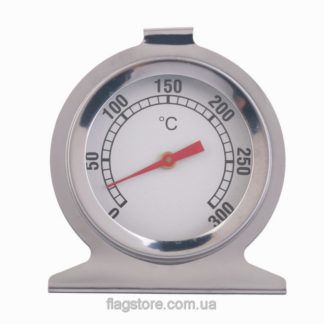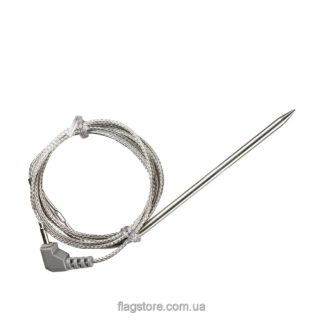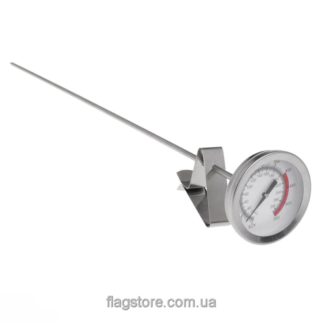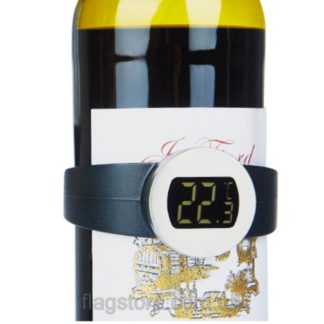What types of thermometers are there?
There are 3 types of thermometers:
- contact probes;
- infrared contactless;
- thermometers-hygrometers for measuring air temperature and humidity.
Probe contact thermometers and air thermometer-hygrometers can be mechanical and electronic.
Mechanical thermometers operate without batteries and are usually completely resistant to moisture and liquids, they often have the ability to be calibrated, but their scale step is larger than that of electronic thermometers. The wider the range of measured temperatures of a mechanical thermometer, the larger the scale step of the thermometer.
Electronic thermometers are battery-powered and always have a wide range of measured temperatures with a small step of the temperature scale (usually 0.1 degrees). A big advantage of electronic thermometers is that they have more capabilities and functionality compared to mechanical thermometers.
Electronic thermometers are either classic (when the temperature probe/sensor is built into the display) or with a remote probe/sensor (when the display is in one place, and the temperature measurement occurs in another).
What are probe thermometers used for?
Probe thermometers are versatile because they measure the temperature of anything that comes into contact with their probe, so they are used in a variety of areas.
Probe thermometers are most often used in cooking. It is difficult to overestimate the importance of temperature control during the preparation of confectionery products (syrups, chocolate, caramel). They are simply irreplaceable when cooking meat (steaks of varying degrees of doneness, sausages, shashlik). Temperature is monitored when making coffee and tea, storing and serving wine. Temperature control is also extremely important in baking. No more or less complex dish can do without strict temperature control.
The use of probe thermometers is not limited to cooking. Temperature control is an important aspect of almost any field of activity: they are used to monitor the temperature of the soil, air in greenhouses/incubators, when servicing various equipment, for precise measurement of the temperature of technical liquids and for many other purposes. Such a tool will never lie idle at home.
What is the difference between electronic and mechanical probe thermometers?
Before purchasing a kitchen thermometer, you need to clearly understand what exactly you will be measuring with it, since mechanical and digital thermometers have a significant difference in the operating principle. Mechanical thermometers measure the temperature along the entire length of the probe, and electronic ones - with the very tip of the probe. Therefore, mechanical thermometers are more often used to measure the temperature of liquids (the probe is immersed as deeply as possible into the liquid and the thermometer displays the average temperature of the liquid), and digital thermometers are more often used to measure the temperature of meat and solids, since they display the temperature inside the product.
It is worth mentioning digital kitchen thermometers with a remote probe separately. These are the most practical culinary thermometers, as they allow you to continuously monitor the temperature of the product and save your time. Such thermometers are equipped with heat-resistant remote probes, thanks to which you can measure the temperature of the product in the oven, on the grill, in a frying pan. In addition to displaying the temperature in real time, you can set the temperature in these thermometers (for example, 75 degrees), upon reaching which the thermometer emits a sound signal. Thanks to this, there is no need to constantly be near the product - you can do your own thing and wait for the sound signal. More advanced versions of such thermometers set the temperature automatically - you only need to select the type of meat and the degree of roasting - the thermometer itself selects the optimal temperature, and thanks to the wireless display, you can generally be in another room all the time.
Which thermometer to choose for the kitchen: analog or digital?
Analog:
- Ideal for measuring the temperature of liquids and air (in the oven, smokehouse), can be used to measure the temperature of meat and solids, provided that the probe is inserted as deeply as possible into the meat/solid.
- Have the ability to calibrate.
- Not afraid of moisture and liquids.
- They have a probe length from 4 to 40 cm.
- The wider the range of measured temperatures, the higher the division value.
- Temperature measurement speed: +/- 10 seconds.
Digital:
- They are universal and measure with the tip of the probe, which means they can be used to measure both liquids and meat/solids.
- Wide range of measured temperatures and low division value (usually 0.1 degrees).
- Do not have calibration capabilities.
- The display speed of the current temperature, depending on the model, ranges from 7 to 40 seconds.
- There are models with advanced functionality, for example, automatic temperature setting depending on the meat and degree of doneness with an audible signal of readiness.
- There are the most practical models with a remote probe.
Here you can buy kitchen electronic thermometers in Kyiv or with delivery throughout Ukraine
You can pick up culinary thermometers from our warehouse in Kyiv on the day of the order. There is also the option of sending by Nova Poshta: shipments are made daily - this means that you can receive the goods the next day after placing the order, provided that you are in large cities such as Kyiv, Odessa, Dnipro, Chernihiv, Kharkov, Nikolaev, Zaporozhye, Lviv, Uzhgorod, Lutsk, Vinnytsia, Zhitomir, Ivano-Frankivsk, Kropyvnytskyi, Poltava, Ternopil, Sumy, Kherson, Chernivtsi, Rivne, Khmelnitsky, Cherkassy, Krivoy Rog, Mariupol, Kamenskoye, Kremenchuk, Bila Tserkva, Kramatorsk, Melitopol, Slavyansk and other large cities of Ukraine.


























